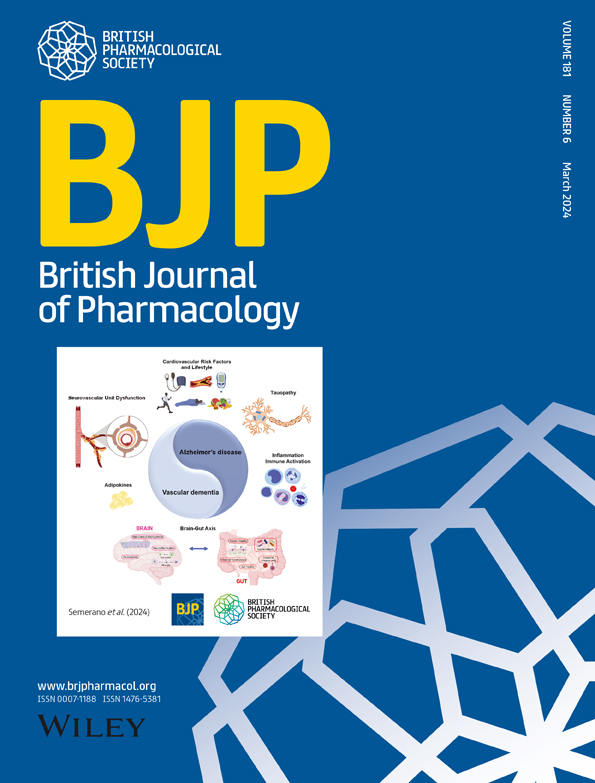Involvement of the somatosensory-autonomic reflex and muscarinic receptors in exacerbation of allergic pulmonary inflammation by electroacupuncture
Abstract
Background and Purpose
Emerging evidence suggests that electroacupuncture (EA) could cause autonomic reflexes to modulate visceral functions. However, the efficacy and underlying mechanisms for somatic stimulation on allergic pulmonary inflammation (API) remain elusive.
Experimental Approach
Mice were administered intranasal Papain to induce API. Distinct current (0,0.1, 0.2 and 0.5 mA) of EA at the back BL13, hindlimb ST36 and forelimb LU5 acupoint were then carried out. The control group underwent the same procedure but without current stimulation. Changes in API was assessed using immunohistochemistry, flow cytometry and haematoxylin and eosin (H&E) staining. Pharmacological approaches were used to investigate the underlying mechanisms of EA effects on API.
Key Results
EA at the back region but not limb regions, in a current intensity-dependent manner, exacerbated API, primarily causing a decrease in the survival rate and intensified inflammation in the lung, including the infiltration of lung type 2 innate lymphoid cells and eosinophils, and lung pathology scores. Blocking local thoracic sensory nerves with lidocaine or lung-innervated autonomic nerves with hexamethonium eliminates the EA-produced detrimental effects. Chemical pulmonary sympathectomy with 6-OHDA further enhanced lung pathology scores, but inhibiting the activity of pulmonary muscarinic receptors was sufficient to prevent the exacerbation of API induced by EA.
Conclusion and Implications
Our findings suggest that BL13 EA induces a somatic-autonomic reflex involving the pulmonary muscarinic receptors, thereby exacerbating API. The selective and intensity-dependency activation of body thoracic regions in driving pulmonary autonomic pathways could help optimise stimulation parameters, enhancing both efficacy and safety in modulating API.

 求助内容:
求助内容: 应助结果提醒方式:
应助结果提醒方式:


